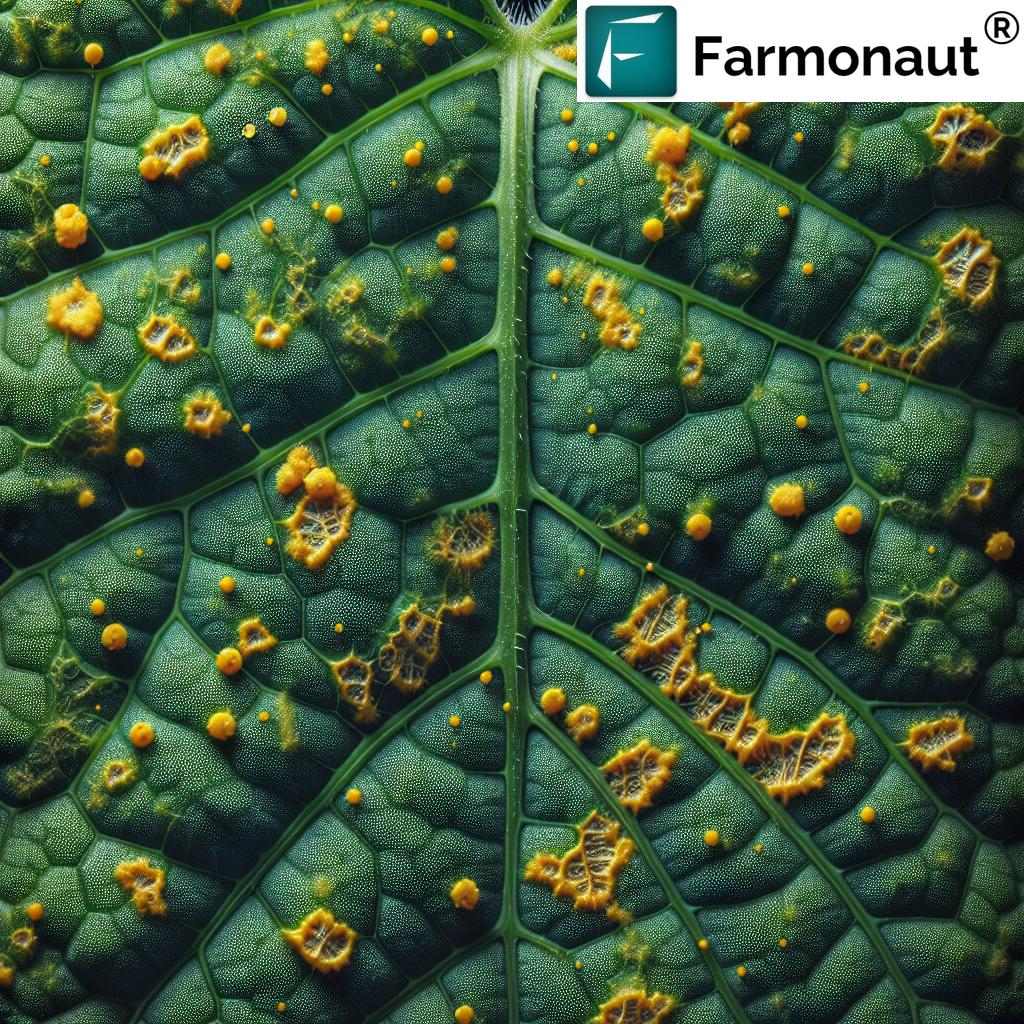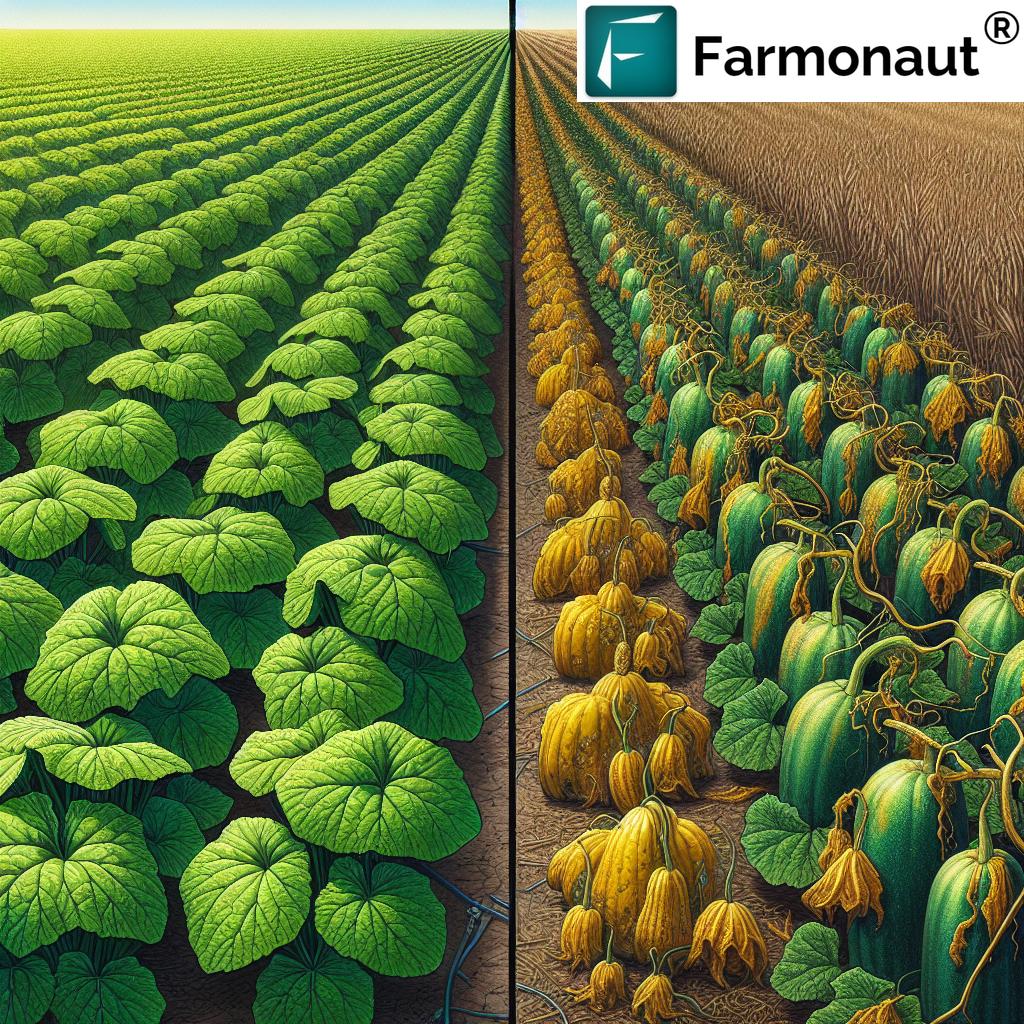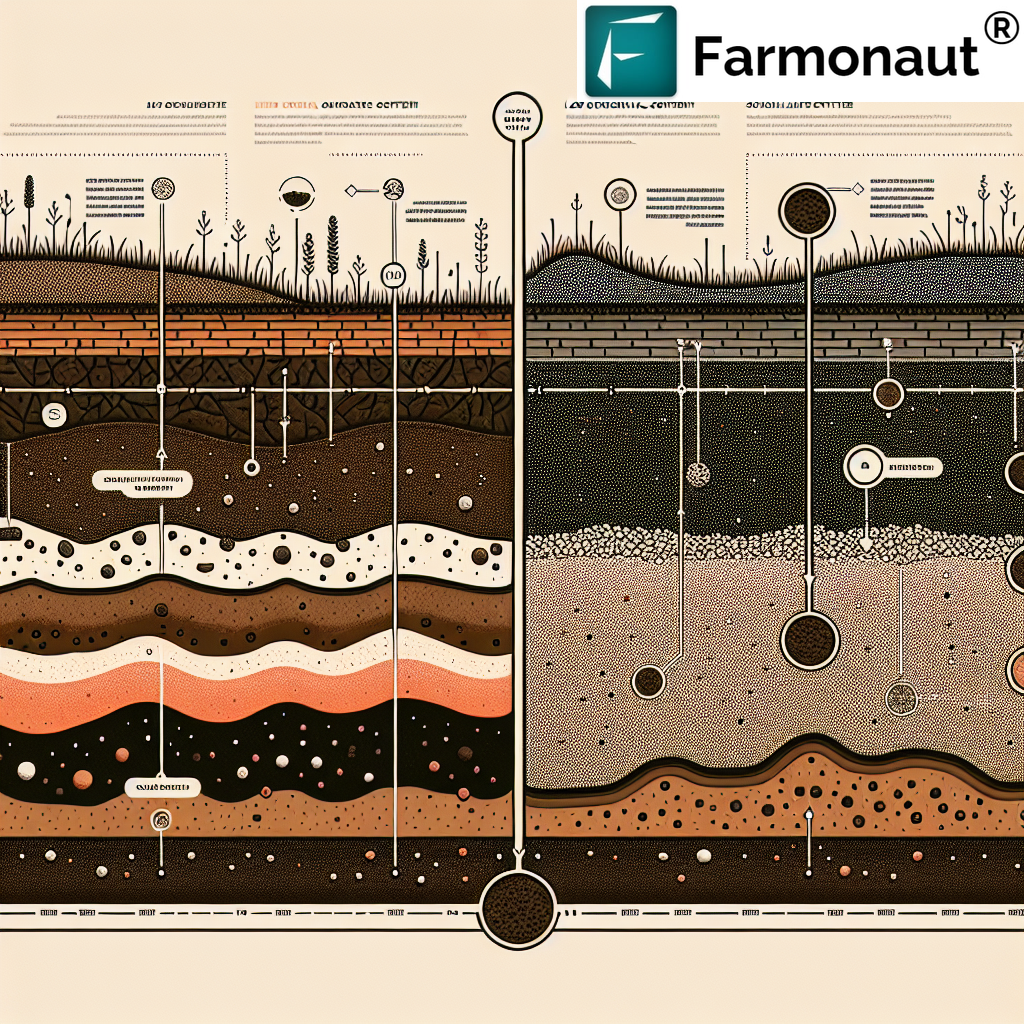Organic vs. Chemical: Integrated Pest Management for Cucurbit Virus Control and Plant Protection

In the world of agriculture and horticulture, protecting our crops from pests and diseases is a constant challenge. When it comes to cucurbits, a family of plants that includes popular vegetables like cucumbers, melons, and squash, the threat of viruses and pests can be particularly daunting. In this comprehensive guide, we’ll explore the intricacies of Integrated Pest Management (IPM) for cucurbits, focusing on both organic and chemical approaches to combat viruses and protect these valuable plants.
Understanding Cucurbit Viruses and Their Impact
Cucurbit crops are susceptible to various viruses, with one of the most notorious being the Cucurbit Yellow Stunting Disorder Virus (CYSDV). This virus, transmitted by whiteflies, can cause significant damage to cucurbit plants, leading to reduced yields and economic losses for farmers.
Symptoms of CYSDV infection include:
- Yellow discoloration of leaves
- Stunting of plant growth
- Reduced fruit size and quality
- Lower overall crop yield
The impact of CYSDV and other cucurbit viruses can be devastating, making effective pest management and plant protection strategies crucial for cucurbit growers.
The Role of Whiteflies in Virus Transmission
Whiteflies are tiny, white, winged insects that play a significant role in the transmission of cucurbit viruses. These pests feed on plant sap and can quickly spread viruses from infected plants to healthy ones. Controlling the whitefly population is, therefore, a key component of managing virus spread in cucurbit crops.

Integrated Pest Management: A Holistic Approach
At Farmonaut, we advocate for an Integrated Pest Management (IPM) approach to cucurbit virus control and plant protection. IPM is a comprehensive strategy that combines various methods to manage pest populations effectively while minimizing environmental impact and promoting sustainable agriculture.
The key components of IPM include:
- Prevention
- Monitoring
- Identification
- Action thresholds
- Control measures (both organic and chemical)
- Evaluation
By implementing IPM, we can create a balanced ecosystem that supports beneficial insects while controlling harmful pests and reducing the reliance on chemical pesticides.
Organic vs. Chemical Treatments: Finding the Right Balance
When it comes to managing cucurbit viruses and pests, both organic and chemical treatments have their place in an effective IPM strategy. Let’s explore the pros and cons of each approach:
Organic Treatments
Organic pest control methods focus on natural solutions that have minimal impact on the environment and non-target organisms. Some effective organic treatments for cucurbit virus and pest management include:
- Biological control using predatory insects
- Neem oil and other plant-based insecticides
- Reflective mulches to repel whiteflies
- Companion planting to attract beneficial insects
- Crop rotation to break pest cycles
Advantages of organic treatments:
- Environmentally friendly
- Safe for beneficial insects
- No chemical residues on produce
- Promotes long-term soil health
Disadvantages of organic treatments:
- May be slower-acting than chemical alternatives
- Can be more labor-intensive
- May require more frequent application
Chemical Treatments
Conventional insecticides and other chemical treatments can provide rapid and effective control of pests and diseases in cucurbit crops. Some common chemical treatments include:
- Systemic insecticides
- Contact insecticides
- Fungicides for secondary fungal infections
- Growth regulators
Advantages of chemical treatments:
- Fast-acting and effective
- Can control large pest populations quickly
- Often longer-lasting than organic alternatives
Disadvantages of chemical treatments:
- Potential environmental impact
- Risk of harming beneficial insects
- Possibility of pest resistance development
- Chemical residues on produce
Implementing IPM for Cucurbit Virus Control
To effectively manage cucurbit viruses and protect plants using an IPM approach, we recommend the following steps:
1. Prevention
Preventing virus introduction and spread is the first line of defense. This can be achieved through:
- Using virus-resistant cucurbit varieties
- Implementing strict sanitation practices
- Controlling weeds that may harbor viruses or pests
- Using insect-proof screens in greenhouses
2. Monitoring
Regular monitoring of crops is crucial for early detection of pests and diseases. At Farmonaut, we offer advanced satellite-based crop monitoring solutions that can help detect potential issues before they become severe. Our technology allows farmers to:
- Track crop health using vegetation indices
- Identify areas of stress or infestation
- Monitor soil moisture levels
- Receive alerts for potential pest outbreaks
To learn more about our satellite monitoring services, visit Farmonaut’s App.
3. Identification
Accurate identification of pests, diseases, and their symptoms is essential for implementing targeted control measures. Our AI-powered advisory system, Jeevn AI, can help farmers identify various cucurbit disorders and provide tailored recommendations.
4. Establishing Action Thresholds
Determining when to take action is a critical aspect of IPM. Action thresholds are the levels at which pest populations or environmental conditions indicate that pest control action must be taken. These thresholds can vary depending on the crop stage, environmental conditions, and economic factors.
5. Control Measures
When action thresholds are reached, a combination of organic and chemical control measures may be implemented. The choice of treatment should be based on efficacy, environmental impact, and cost-effectiveness. Some integrated control strategies include:
- Using yellow sticky traps to monitor and control whitefly populations
- Applying organic insecticides like neem oil as a first line of defense
- Introducing beneficial predatory insects to control pest populations
- Using selective chemical insecticides when necessary, targeting specific pests while minimizing harm to beneficial insects
- Implementing cultural practices such as pruning infected plant parts and maintaining optimal plant spacing
6. Evaluation
Continuously evaluating the effectiveness of implemented control measures is crucial for refining the IPM strategy. This involves:
- Monitoring pest populations after treatment
- Assessing crop health and yield
- Analyzing the cost-effectiveness of control measures
- Adjusting strategies based on results and new information
Farmonaut’s Role in Enhanced IPM for Cucurbits
At Farmonaut, we’re committed to revolutionizing pest management through cutting-edge technology. Our satellite-based monitoring system and AI-driven advisory services offer several advantages for cucurbit growers implementing IPM:
- Early detection of crop stress and potential pest infestations
- Precise mapping of affected areas for targeted treatments
- Real-time weather data to optimize treatment timing
- Historical data analysis for improved pest prediction and prevention
- Customized recommendations based on crop type, location, and observed conditions
To illustrate the benefits of Farmonaut-assisted IPM, let’s compare traditional pest management approaches with our technology-enhanced solutions:
| Aspect | Traditional Pest Management | Farmonaut-Assisted IPM |
|---|---|---|
| Detection Method | Manual field scouting | Satellite imagery + AI analysis |
| Response Time | Days to weeks | Hours to days |
| Precision | Limited to visible symptoms | High-resolution mapping of affected areas |
| Cost-Effectiveness | Labor-intensive, time-consuming | Efficient, reduces unnecessary treatments |
| Environmental Impact | Potential overuse of pesticides | Targeted treatments, reduced chemical usage |
By leveraging Farmonaut’s technology, cucurbit growers can implement more effective and sustainable IPM strategies, leading to improved crop health, reduced environmental impact, and increased profitability.
Case Study: Implementing IPM for CYSDV Control in Melon Crops
To illustrate the effectiveness of an integrated approach to cucurbit virus management, let’s examine a hypothetical case study of a melon farm dealing with CYSDV:
A melon farmer in a region prone to CYSDV outbreaks implemented a comprehensive IPM strategy with the help of Farmonaut’s technology. The approach included:
- Regular satellite monitoring of crop health using Farmonaut’s platform
- Installation of yellow sticky traps to monitor whitefly populations
- Use of reflective mulches to repel whiteflies
- Introduction of predatory insects to control whitefly populations
- Application of neem oil as a preventive measure
- Targeted use of systemic insecticides in high-risk areas identified by satellite imagery
- Continuous evaluation and adjustment of control measures based on Farmonaut’s AI-driven recommendations
Results:
- 30% reduction in CYSDV incidence compared to previous years
- 20% decrease in overall pesticide usage
- 15% increase in marketable yield
- Improved farm profitability and sustainability
This case study demonstrates the potential of combining traditional IPM practices with advanced technology to achieve superior results in cucurbit virus management.
The Future of Cucurbit Virus Management
As we look to the future, the integration of technology in pest and disease management will continue to play a crucial role in sustainable agriculture. Some emerging trends and technologies that may shape the future of cucurbit virus management include:
- Gene editing for improved virus resistance in cucurbit varieties
- Advanced bio-pesticides with enhanced efficacy and environmental safety
- Drone-based pest monitoring and precision treatment application
- Machine learning algorithms for more accurate pest prediction and management recommendations
- IoT sensors for real-time monitoring of crop health and environmental conditions
At Farmonaut, we’re committed to staying at the forefront of these technological advancements, continually improving our services to provide cucurbit growers with the most effective tools for pest and disease management.
Conclusion
Effective management of cucurbit viruses and pests requires a holistic, integrated approach that balances organic and chemical treatments while leveraging cutting-edge technology. By implementing a comprehensive IPM strategy and utilizing advanced monitoring tools like those offered by Farmonaut, cucurbit growers can significantly improve their crop protection efforts, reduce environmental impact, and increase their overall productivity and profitability.
We encourage all cucurbit growers to explore the benefits of satellite-based crop monitoring and AI-driven advisory services in enhancing their IPM strategies. To learn more about how Farmonaut can support your pest management efforts, visit our website or download our mobile app:
For developers interested in integrating Farmonaut’s satellite and weather data into their own applications, we offer comprehensive API documentation:
Together, we can work towards a future of sustainable cucurbit cultivation, where advanced technology and integrated pest management practices come together to protect our crops and ensure food security for generations to come.
FAQs
-
Q: What are the main symptoms of CYSDV in cucurbit plants?
A: The main symptoms of CYSDV include yellow discoloration of leaves, stunting of plant growth, reduced fruit size and quality, and lower overall crop yield. -
Q: How do whiteflies transmit viruses to cucurbit plants?
A: Whiteflies transmit viruses by feeding on infected plants and then moving to healthy plants, transferring the virus through their saliva as they feed. -
Q: What are some effective organic treatments for controlling whiteflies in cucurbit crops?
A: Effective organic treatments include using neem oil, introducing predatory insects, using reflective mulches, and implementing companion planting strategies. -
Q: How can Farmonaut’s technology improve IPM strategies for cucurbit growers?
A: Farmonaut’s satellite-based monitoring and AI-driven advisory services enable early detection of crop stress, precise mapping of affected areas, and customized recommendations for more effective and targeted pest management. -
Q: Is it possible to control cucurbit viruses without using chemical pesticides?
A: While it’s challenging to control cucurbit viruses entirely without chemicals, a well-implemented IPM strategy can significantly reduce the need for chemical interventions by focusing on prevention, monitoring, and organic control methods.













